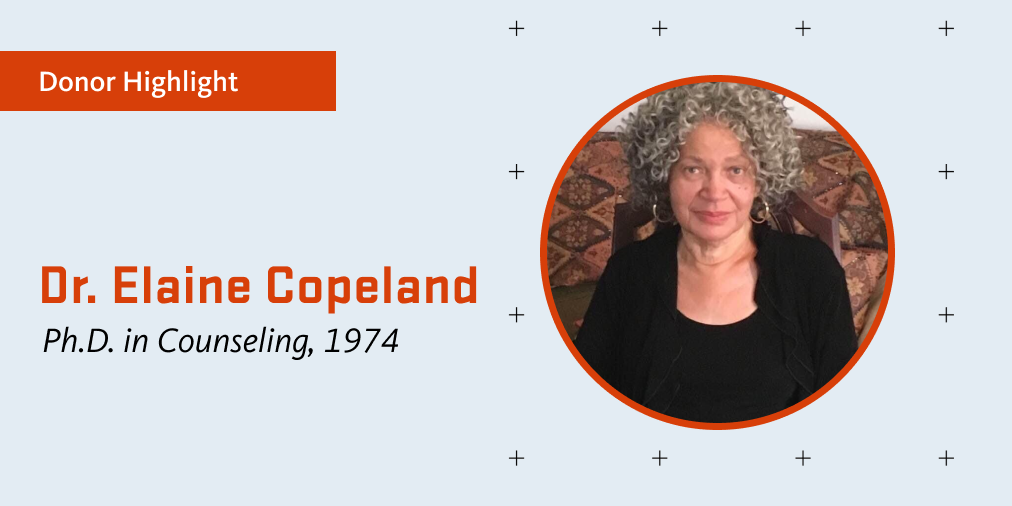
When Greg Garcia discovered he was named 2021 Oregon History Teacher of the Year, all he could think about was Mike O’Malley. The senior instructor in the College of Education had died the previous day.
“Mike O’Malley is the entire reason why I’m in education right now,” Garcia says. “I dedicate my award to Mike’s memory. Everything I do as a teacher is based on his example.”
Garcia was first introduced to O’Malley when he came to Oregon State in 2014. After receiving his master’s degree in American history from Western Oregon University, Garcia simultaneously earned his teaching license from Oregon State. Garcia was enrolled in both the ELA/Social Studies and English Speakers of Other Languages (ESOL) programs.
He now teaches Advanced Placement U.S. history and AP psychology at Franklin High School in Portland.
When Garcia graduated from Western Oregon University, he hoped to work at the U.S. State Department in the field of U.S./Latin American relations. He felt that if he worked hard enough, he could make history.
Garcia did go on to make history, just not in the way he thought he would.
From Dread to Gratitude
Education wasn’t Garcia’s initial career choice. After graduating from Western Oregon University his stepmother, an elementary school principal, along with his mother, a middle school English teacher, suggested Garcia go into teaching.
“At first, I was a little hesitant, because it’s a hard job,” he says.
Garcia experienced the lows early on. As a student-teacher, he was placed with a bilingual social studies teacher, at a school that ranked low in technology and had a 93% poverty rate.
Garcia recalls one of the most pivotal moments as a student-teacher being a day at school when his students erupted in aggression, yelling and throwing garbage at him.
Garcia came to dread the idea of being a teacher, thinking he wasn’t made for the job. But after an invitation to coffee with O’Malley, things changed.
“He talked me off the proverbial ledge and convinced me that things would get better,” Garcia says. “Every day I’m in the classroom I’m thankful Mike convinced me to stay.”
Garcia says he realized the significance O’Malley’s mentorship and teaching philosophy had on him after O’Malley’s death.
“Mike O’Malley did the heavy lifting over one of the worst chapters of my life,” he says. “Meeting Mike was my axial moment.”
Garcia also attributes his strengths as an educator to his stepmother for teaching him practicality, and his biological mother who taught him creativity. One of the most valuable lessons he learned from them was the idea that he must attend to a student’s needs before he can teach them. He does this every day, providing snacks and resources in his classroom.
Creating “well-informed citizens”
Franklin High School has a diverse student population, and Garcia’s classroom incorporates practical learning experiences into his teaching. Students explore a wide range of history topics, and they can participate in culturally diverse activities.
Before he was a teacher, during his time at Oregon State, Garcia designed museum exhibits, and that experience lives on in his classroom. He’s made graduate-level education available to traditionally underserved students with the opportunity to research and build their own exhibit on a historical narrative of their choosing. The exhibits are installed on campus and open to the public in the spring.
“I wish Mike O’Malley could see what has happened here because at Franklin, at one time we had more AP U.S. history classes than we did standard,” he says.
Garcia hopes to make AP U.S. history classes available to a wider variety of demographics, because of how important he believes history is to his students’ education.
“I firmly believe that history needs to have a higher priority,” he says. “My goal is to make students well-informed citizens.
“One of the things I feel very passionate about as an instructor is helping kids find their full potential. It’s all about reaching students where they are and helping them go in the direction they want to go.”
As Oregon History Teacher of the Year, Garcia says he hopes to see his methods of education be adopted nationwide.
“This award gives me the legitimacy and ethos to make that happen,” he says. “It gives me the opportunity and authority to try to bring about significant change in the field of social studies and history. And to continue the journey on which Mike started me on. I hope to do for others what he did for me.”
From his time at Oregon State to his career at Franklin High School, Garcia says he takes pride in the work he’s done and the experiences he’s had.
“Every person in the College of Education played a really supportive role in helping me reorganize and reorient the trajectory of my life. Oregon State helped me find focus and made it all possible.”
The History Teacher of the Year Award is given by the Gilder Lehrman Institute of American History to teachers in all 50 states, the District of Columbia, and U.S. Territories. As Oregon’s honoree, Garcia received a $1,000 prize, an archive of American history books and Gilder Lehrman educational materials. Garcia will be recognized at an award ceremony in the spring.
Mike O’Malley’s legacy and memory lives on in the College of Education and in the many lives he touched. A memorial plaque is hung on the first floor of Furman Hall and a collection of memorial pieces can be viewed in this blog post.









